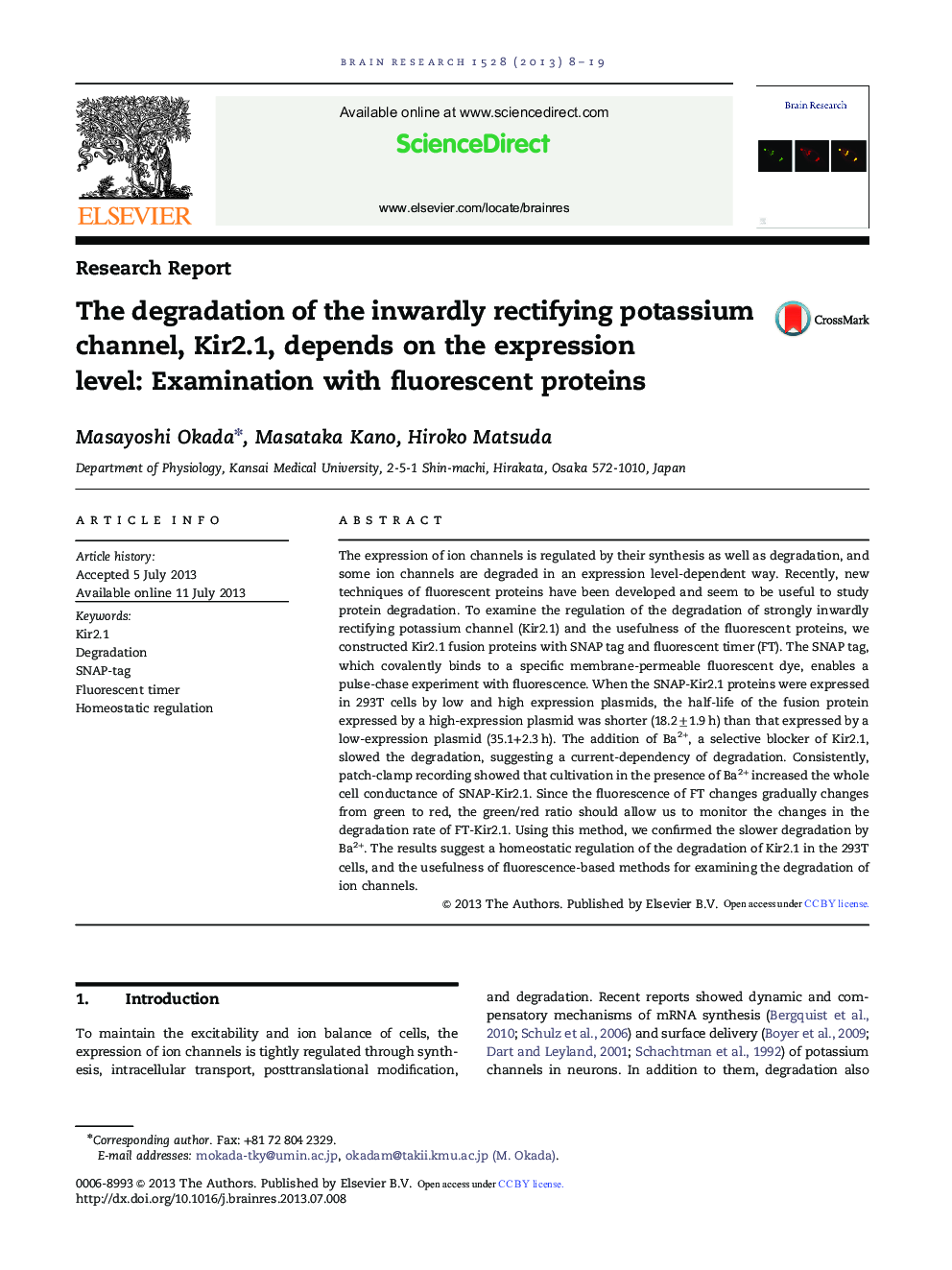| Article ID | Journal | Published Year | Pages | File Type |
|---|---|---|---|---|
| 6263725 | Brain Research | 2013 | 12 Pages |
â¢We examined degradation of inwardly rectifying K+ channel, Kir2.1 in 293T cells.â¢We used fluorescence-based methods and patch-clamping.â¢Half-life of Kir2.1 changes homeostatically depending on the current levels.
The expression of ion channels is regulated by their synthesis as well as degradation, and some ion channels are degraded in an expression level-dependent way. Recently, new techniques of fluorescent proteins have been developed and seem to be useful to study protein degradation. To examine the regulation of the degradation of strongly inwardly rectifying potassium channel (Kir2.1) and the usefulness of the fluorescent proteins, we constructed Kir2.1 fusion proteins with SNAP tag and fluorescent timer (FT). The SNAP tag, which covalently binds to a specific membrane-permeable fluorescent dye, enables a pulse-chase experiment with fluorescence. When the SNAP-Kir2.1 proteins were expressed in 293T cells by low and high expression plasmids, the half-life of the fusion protein expressed by a high-expression plasmid was shorter (18.2±1.9 h) than that expressed by a low-expression plasmid (35.1+2.3 h). The addition of Ba2+, a selective blocker of Kir2.1, slowed the degradation, suggesting a current-dependency of degradation. Consistently, patch-clamp recording showed that cultivation in the presence of Ba2+ increased the whole cell conductance of SNAP-Kir2.1. Since the fluorescence of FT changes gradually changes from green to red, the green/red ratio should allow us to monitor the changes in the degradation rate of FT-Kir2.1. Using this method, we confirmed the slower degradation by Ba2+. The results suggest a homeostatic regulation of the degradation of Kir2.1 in the 293T cells, and the usefulness of fluorescence-based methods for examining the degradation of ion channels.
